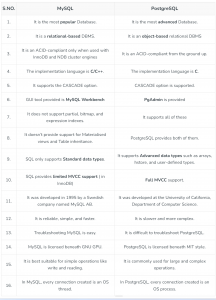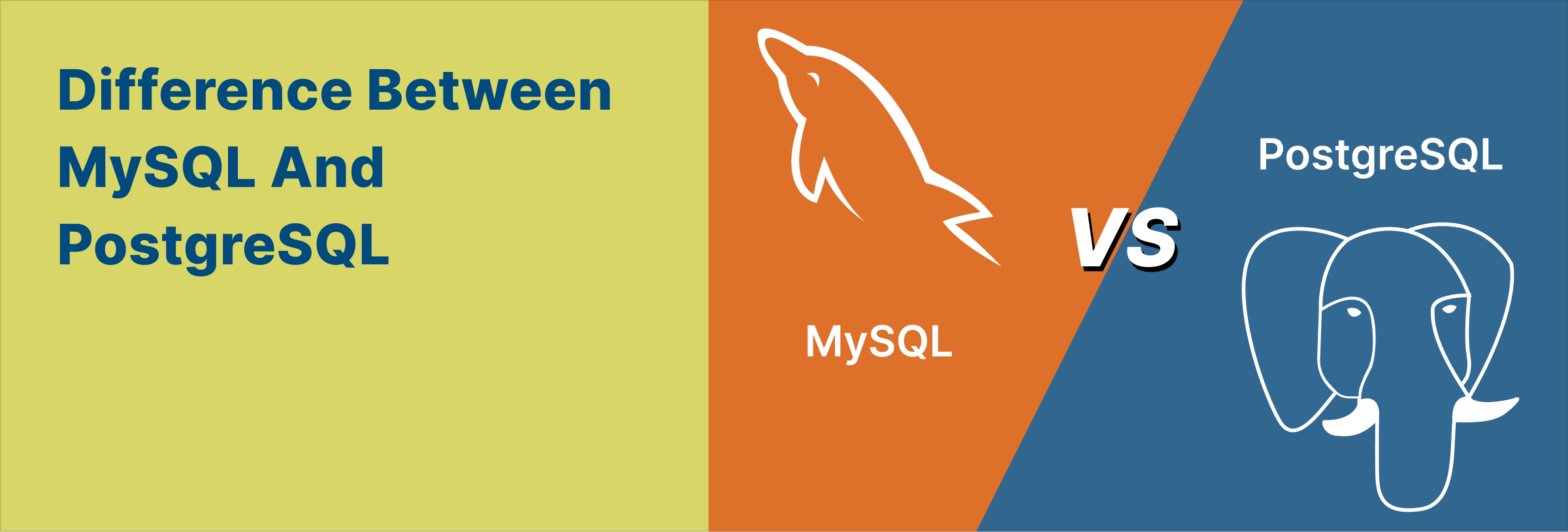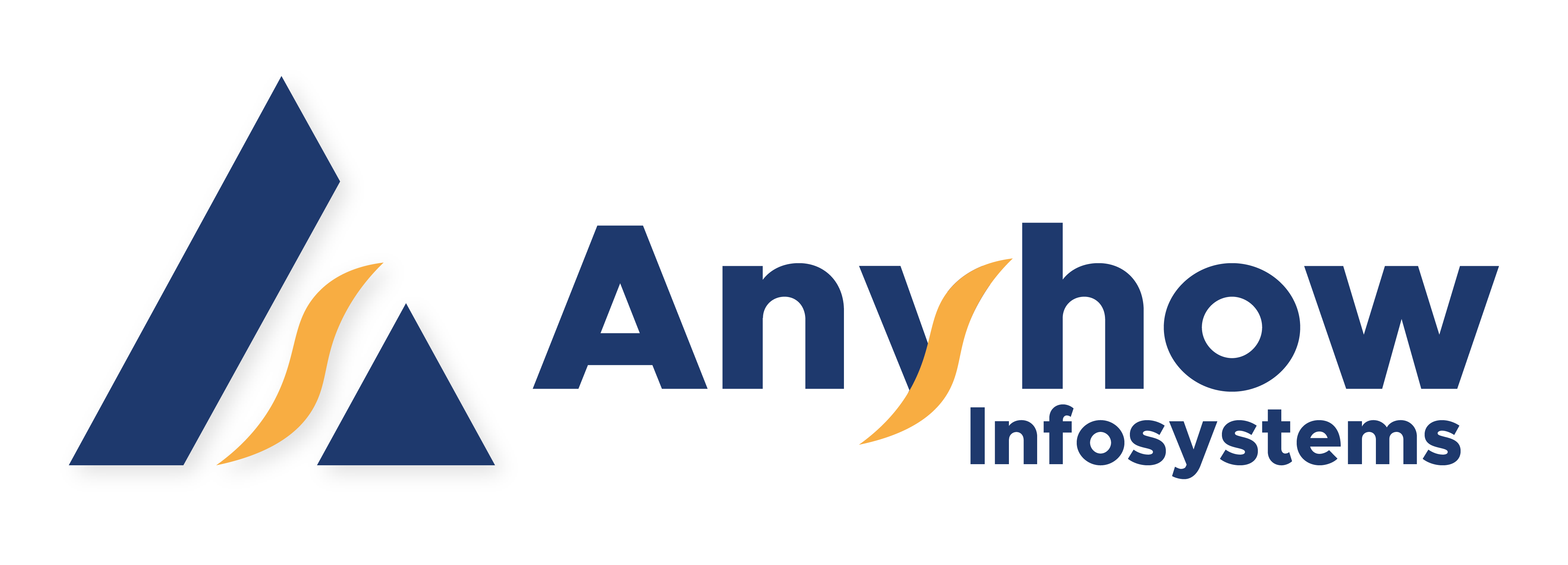Difference between MySQL and PostgreSQL
What is MySQL?
MySQL is a cross-platform, open-source and relational database management system used for handling the database. The data in this table is stored in tables which makes it easy to perform CRUD operations (Create, Read, Update and Delete).
Features of MySQL
- Fast, easy, and reliable.
- Can be used for both large and small applications.
- Provides high scalability.
What is PostgreSQL?
PostgreSQL is an open-source object-relational database management system (ORDBMS), which is used to manage data. It provides good performance with low maintenance efforts because of its high stability. PostgreSQL was the first ORDBMS that implemented the multi-version concurrency control (MVCC) feature.
Features of PostgreSQL
- Support for the vast amount of languages.
- It provides advanced security features.
- It has geo-tagging support.
MySQL vs PostgreSQL

Benefits of Use MySQL
- Unmatched data security — as compared to other database management platforms — due to its use of Secure Socket Layer (SSL). This helps to ensure data integrity, which makes it a popular database for web applications.
- High performance, because MySQL’s storage-engine framework supports demanding applications with high-speed partial indexes, full-text indexes and unique memory caches for superior database performance.
- Scalability and support for unlimited storage growth in a small footprint.
- Flexible open-source framework with support for transactional processing, although not as flexible as non-relational databases such as NoSQL.
Benefits of Use PostgreSQL
- Performance and scalability — including geospatial support and unrestricted concurrency — and deep, extensive data analysis across multiple data types.
- Concurrency support through the use of multi version concurrency control (MVCC), which enables the simultaneous occurrence of write operations and reads.
- Deep language support due to its compatibility and support for multiple programming languages, including Python, Java, JavaScript, C/C++ and Ruby.
- Business continuity, with high availability of services through asynchronous or synchronous replication methods across servers.
- Greater flexibility and cost-effective innovation through open-source database management technology.





